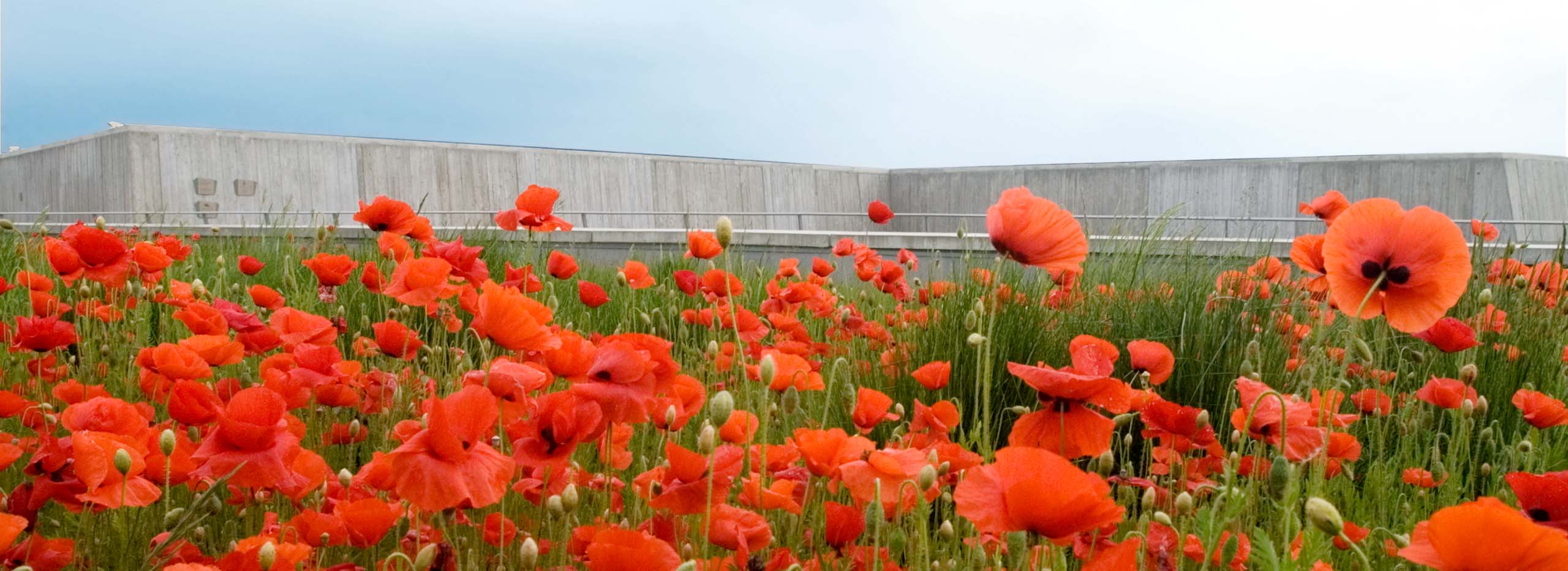Welcome to this Remembrance guided tour stop at the Canadian War Museum. My name is Jennifer and I’m a museum interpreter.
The building we’re standing in is a place where architecture, artifacts and exhibitions work together to help us understand war and its impact on all Canadians, past and present. It’s a place where we come to remember.
The War Museum is not just a place to preserve and share the story of Canada’s military past. It’s part of that story. If these walls could talk, what would they say? Let’s take a closer look at how the message of remembrance is intertwined with the architecture all around us.
The Museum is a stunning piece of architecture. But when we look closely, we discover layers of meaning. Let’s start outside and work our way in.
The history of the War Museum begins in 1880 — but this building is more recent. It opened in 2005. Like all of its previous sites in Ottawa, the Museum is located on the traditional, unceded territory of the Algonquin Anishinabeg.
The architecture was inspired by the idea of Regeneration. The building illustrates war’s devastating impact on the landscape and nature’s ability to regenerate through growth.
The architect, Raymond Moriyama, designed the Museum to look like it’s emerging from the earth. In designing the surrounding landscape, he was inspired by First World War battlefields. The shapes of trenches and craters are symbolic of the brutality of war.
But if you walk up to the roof, you’ll see grass growing on top of everything. This represents nature reclaiming and healing the earth.
In fact, if you visit in the summer, you may even find a field of poppies blowing in the breeze or spot a red fox hunting in the tall grass.
Looking at the top of the building, you’ll notice a series of small windows. Some are short. Others are long. They represent letters in Morse code and are arranged in a way that conveys a message: “Lest we forget” in English and “N’oublions jamais” in French.
Now, let’s head inside …
Do you find all of these sloped walls, floors and ceilings a bit unsettling? All the different angles were designed to put us off balance. This disorientation evokes the instability and chaos of war.
In the lobby, we’re surrounded by textured concrete walls that suggest military fortifications, like wooden barricades, a stone fortress or a concrete bunker.
But here’s a wall that’s not concrete. Do you know what this green material is? It’s oxidized copper! When the copper roof tiles from the Library of Parliament were replaced in the early 2000s, the old tiles were given a new life, as wall covering for the Museum. This symbolizes the link between Canadian military history and the seat of democracy in the capital.
This link is important because Parliament is where Canada’s wartime decisions have been, and still are, debated. The Canadian War Museum is where we seek to understand the context and consequences of those decisions.
As you can see, this building is fascinating on many levels. While it holds all the Museum’s collections and exhibitions, it does so much more than house our military history.
From the incredible concrete façade that emerges from the earth to the texture of the interior walls, every detail has been considered. The entire structure plays a role in illustrating Canada’s military past and helping us to remember it.

